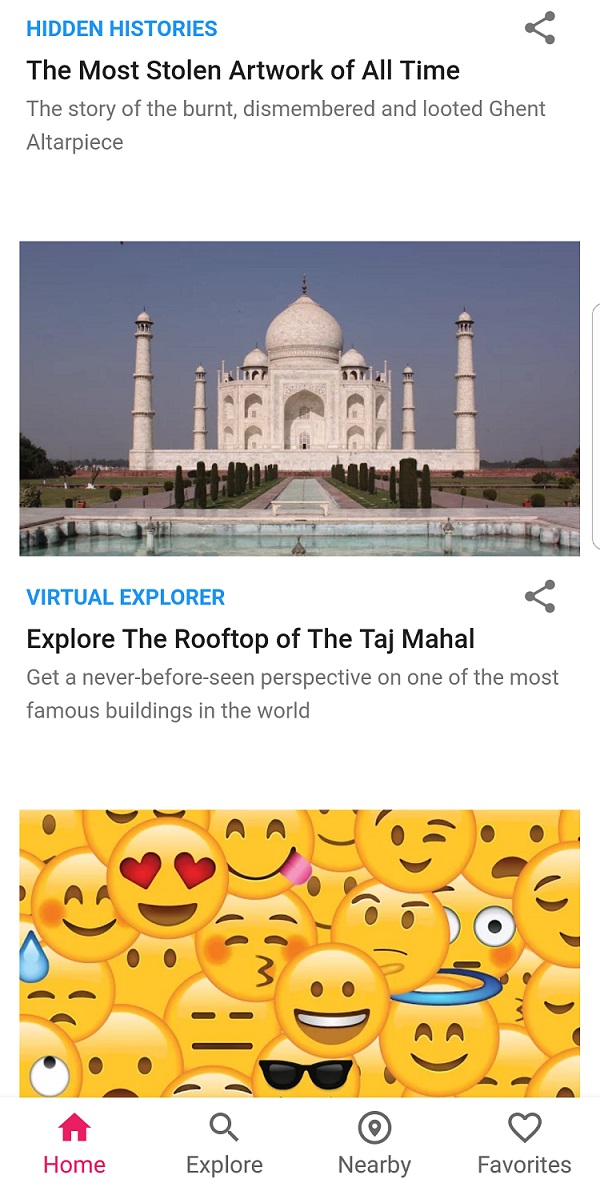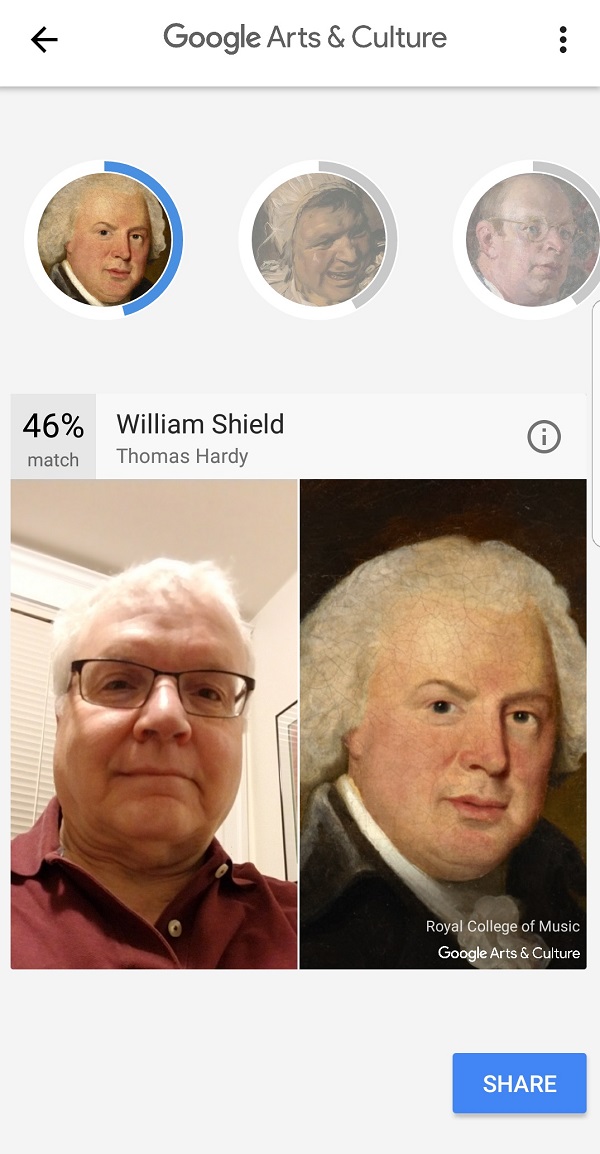Google released its Arts & Culture app in 2016, and it was nice. It catalogued art all over the world, and was a nice way to learn about and keep up with art and culture topics, including 3D tours of the Taj Mahal and other sites. But it wasn’t a must-have app.

That changed in December when they added a new feature. You now can take a selfie with the app and it will look through its database of art works and, using AI, find the image it thinks most resembles you.

Kind of baroque, but I can accept it.
It took a few weeks for the feature to be discovered, but now that it has Facebook and Twitter are full of postings from people showing what they were matched with. And the app has been downloaded over 1 million times and has a 4.3 out of 5 rating.
Supposedly the feature that drove the early popularity of Facebook was its “relationship status” with options such as single, in a relationship, and it’s complicated. That was understandably popular with its early college-only crowd and differentiated it from the college’s print-only version.
Uber was inherently viral because a person could say to a group of friends, “I can get us a ride real fast with this new app. Watch this.” And then they could talk it up and show them that they could see the rating of the driver in advance, no cash payment was necessary (their credit card was already connected), the tip was included, and so on.
These are examples for consumer apps and the drivers for business adoption of tools like Slack or Trello were very different. But whatever your target market, it’s critical to figure out what will make your product or service must-have.
